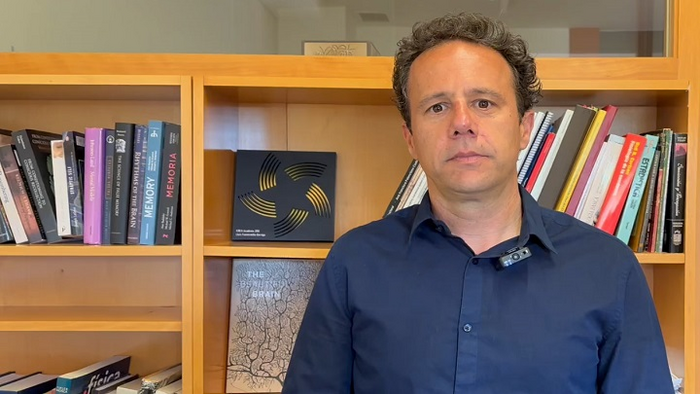Generating new memories and remembering are two sides of the same coin, although sometimes they can appear as separate mechanisms. These mechanisms which seem to be distanced from each other are actually interconnected and are part of the same neural assemblies, according to a study now published in the journal Current Biology, which reveals the first scientific evidence on humans’ memory dynamics.

Credit: UNIVERSITY OF BARCELONA
Generating new memories and remembering are two sides of the same coin, although sometimes they can appear as separate mechanisms. These mechanisms which seem to be distanced from each other are actually interconnected and are part of the same neural assemblies, according to a study now published in the journal Current Biology, which reveals the first scientific evidence on humans’ memory dynamics.
The study, led by the experts Lluís Fuentemilla and Ludovico Saint Amour di Chanaz, from the Faculty of Psychology and the Institute of Neurosciences of the University of Barcelona (UBneuro), describes for the first time a specific neural mechanism through which the hippocampus coordinates the possibility of switching the formation and retrieval states of memories in humans.
What happens in your brain when you code and retrieve memories?
The memory formation and retrieval process involves several brain areas, but in this organ, the hippocampus is particularly important in the early formation of memories and in its detailed retrieval. However, what mechanism does the hippocampus use to alternate the formation of new memories and the retrieval of existing memories without the two processes interfering with each other?
Recordings of neuronal activity using electrodes implanted in the brain have shown the existence of rhythmic waves of activity known as oscillations. These appear when large numbers of neurons fire in a synchronized manner. The recordings reveal that the frequency of these oscillations —the number of cycles of a wave per second, measured in Hertz— can vary within a single region over time. Moreover, oscillations with different frequencies can coexist and interact with each other.
Within the hippocampus, one of the brain’s most important structures for forming and recalling memories, two types of oscillations dominate: theta waves and gamma waves. Theta waves are relatively slow waves, with a frequency between 4 and 8 Hertz. These slow waves synchronize the gamma oscillatory activity, between 30 and 140 Hertz, and regulate it so that it can be coupled in different phase states of the theta rhythm. One study (Neural Computation, 2002) proposed that the theta oscillations would act as a “switch” that would allow alternating optimal neural states for the formation of new memories and optimal states for the retrieval of memories.
“Previous studies with animals showed that the way in which gamma activity is coupled to the theta rhythm has an impact on memory (encoding and memories). However, we did not know if the same neural mechanism was important in humans”, says Professor Lluís Fuentemilla, who is also a researcher at the Bellvitge Biomedical Research Institute (IDIBELL).
For the first time, the Dynamics of Memory Formation group, led by Ludovico Saint Amour di Chanaz and coordinated by Lluís Fuentemilla, has deciphered the dynamics of memory in humans by analyzing the interactions between the neuronal brain waves underlying the formation and retrieval of memories.
As part of the study, the team was able to record the hippocampal activity of ten epileptic patients in collaboration with the Hospital Clínic in Barcelona and the Pitié-Salpetrière Hospital in Paris. During the experimental protocol, the patients watched a series of images depicting a real-life episode. After 24 hours, they were shown the first image of each series again and asked to recall the subsequent sequence of images. According to the results, when patients formed new memories, there was a specific pattern of oscillatory activity in the gamma band related to the theta rhythm. During the process of encoding novel memories, gamma neuronal activity was coupled to a certain phase of the theta waves, while during memory retrieval, gamma activity was coupled to the opposite phase.
Not-so-separate neurophysiological functions
Another relevant result of the study is that the displayed pattern was predictive of memory status (encoding or recall) and also of the accuracy of the patients’ responses during the memory retrieval. Thus, the stronger the pattern, the better the patients’ memories were.
“People are able to dynamically encode new memories and link them with existing ones immediately. Therefore, we have the impression that memory encoding and retrieval are separate functions that can work simultaneously”, says Lluís Fuentemilla, member of the Department of Cognition, Development and Educational Psychology of the UB.
“In addition —the expert adds—, a modulation by the theta rhythm ensures that our brain changes the state four to eight times per second, and this gives us the impression of a dynamic interaction between the process of encoding information, integration and retrieval of the memory”. “With a better understanding of how memories are formed and retrieved in humans, we will be able to develop new treatments for people with memory difficulties, as well as better understand our past, future and, in short, what makes us who we are: human”, he concludes.
Journal
Current Biology
DOI
10.1016/j.cub.2023.03.073
Method of Research
Experimental study
Subject of Research
People
Article Title
Gamma amplitude is coupled to opposed hippocampal theta-phase states during the encoding and retrieval of episodic memories in humans
Article Publication Date
14-Apr-2023




